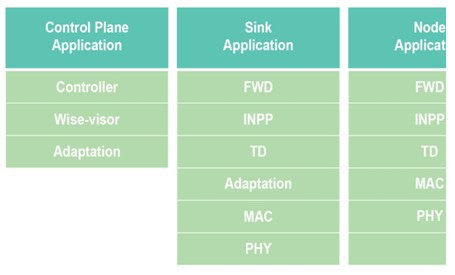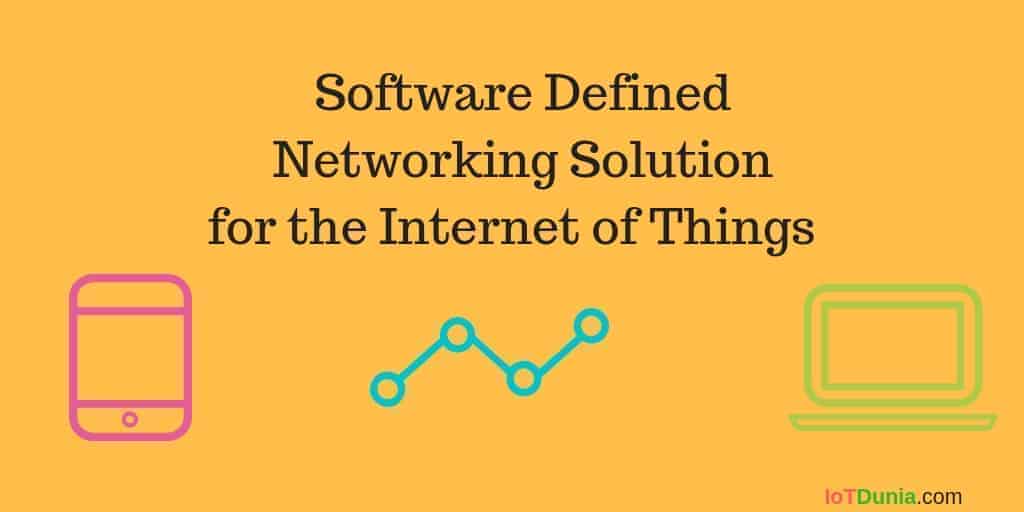Software Defined Networking Solution:
Software program Defined Networking (SDN) is envisioned as a method to lower the intricacy of network configuration and management. New network control and management remedies could be conveniently released on existing equipment as simple as it is to set up new programs on a computer.
In SDN networks, management procedures are streamlined and physically divided from forwarding operations. SDN Switches categorize and forward packages according to the so-called flow rules sent out by the SDN Controller(s).
When a switch has no information offered to identify an incoming packet, it demands the help of one or numerous controllers which must provide an appropriate rule. The policies applied by controllers, which in the long run specify the whole network actions, could be quick as well as swiftly changed by installing a new Controller software.
We use SDN -WISE model in wireless infrastructure-less networks.
Our SDN-WISE Protocol Architecture
The protocol architecture is shown in the following figure.

Our SDN -WISE is based upon IEEE 802.15.4 physical as well as MAC layers. Network components could be distinguished into Sinks and Nodes. The distinction between Sinks and the Nodes is that the formers are outfitted with a network interface linked to an infrastructure network. All control packets ought to find a way towards to a Sink to leave the WSN and get to the Controller.
In addition to the MAC layer, the Forwarding (FWD) layer takes care of incoming packets as defined in the WISE Flow Table. The FWD layer updates this table in accordance with the configurations sent out by the Control airplane.
See also: IoT Gateway Architecture : Overview of Gateway Software
The In-Network Packet Processing (INPP) layer runs on top of the Forwarding layer and it is accountable for procedures like data aggregation or various another in-network handling.
A request is sent out to the Control plane if no entry in the WISE Flow Table matches the present packet. In order to contact the Control plane, each node needs to understand its best next hop towards a Sink. This value is computed in a distributed way making use of the Topology Discovery (TD) layer via beaconing.
In the Control Plane, network logics are determined by one or numerous Controller(s), and a WISE-Visor. The WISE-Visor abstracts network resources to ensure that various sensible networks, with various management policies set by different Controllers, could run over the very same set of physical devices.
Between the Sinks and the WISE-Visor, there is the Adaptation layer which is accountable for formatting messages obtained from a Sink in such a manner in which they could be taken care of by the WISE-Visor and vice versa.
Our SDN- WISE Approach
The behavior of SDN -WISE nodes is totally inscribed right into 3 data frameworks:
| WISE States Array | Accepted IDs Array | WISE Flow Table |
WISE States Array
Our SDN -WISE nodes are defined by a present state for every active Controller. The WISE States Array is the data framework having such information.
Accepted IDs Array
The Accepted IDs array enables a sensor node to pick packets to process. This works specifically for attaining multicast communication using the broadcast nature of the wireless medium.
WISE Flow Table
Each entry of the WISE Flow Table has a Matching Rules section which defines the conditions under which the entry applies. If these conditions are satisfied the sensor will certainly do the activity contained in the Action section of the entry.
See also: Fritzing Software tool : Sketch out Circuits || No need of Hardware
Let us know what you think on above information in the comment section below.
Visit our YouTube Channel for IoT video Tutorials to know more on Internet of Things










1 Review